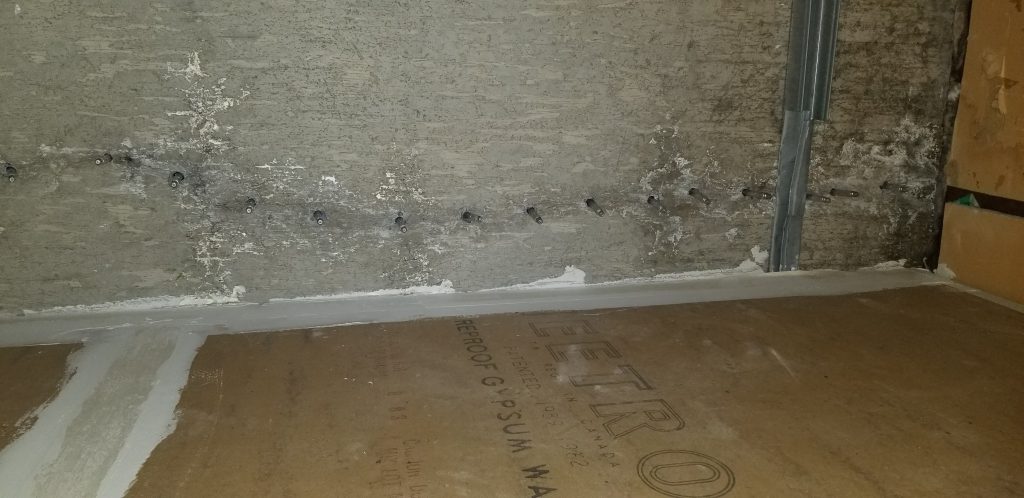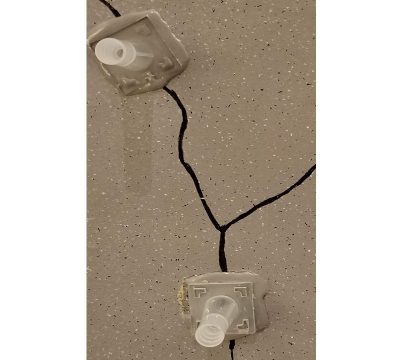Concrete injection
High pressure concrete injection:
The injection of high pressure caulking is the technique used for cracks of 7mm or less. The high pressure injection makes it possible to repair the crack in the concrete well to prevent water from seeping through this crack again. Structural tiles are often injected this way to eliminate the risk of a second water infiltration.

Low pressure concrete injection:
Low pressure caulking is the technique used for cracks of 1.5mm or more. Béton Samson injects the appropriate product, depending on the type of crack, to fill the entire crack. The crack can be repaired from the inside as well as from the outside.

Concrete injection techniques can be used in the following areas:
Measures to prevent cracking
Measure the progression of signs over time
As we mentioned above, cracks can be active and passive. Passive cracks may not move for years. On the other hand, active cracks can worsen quickly and cause damage to the entire structure.
It is preferable to carry out two evaluations spaced one year apart. If it is not possible to wait a year, it is recommended to take the first measurement in the spring and the second, towards the end of the year.
To change the progression of cracks, we can use specific tools available on the market (crackmeter). There are also simpler ways. We could mark landmarks on each side of a crack and measure its opening (preferably, every month). Another way is to install rigid witnesses on the cracks in the foundation walls. To do this, you must model a plaster of Paris rectangle (available in hardware stores) about 1 cm thick and affix it over the crack. We write the date of installation on the rectangle. As it dries, the plaster sticks to the wall and if the crack grows, the plaster witness also cracks.
Repair the foundation from the inside or outside
Opinions on this issue differ. Some experts say that interior repair is only a temporary solution. Others consider that, depending on the context, both options are good. It is cautioned that for excavators, it is more advantageous (because it is more expensive) to perform the work from the outside and consumers should exercise caution. We will briefly introduce the two options.
Repair from the inside
Closing a crack in a foundation from the inside is the cheapest option. It consists of injecting liquid resin into the crack under high pressure. First, install injection tubes and needles 6 to 8 inches apart and inject a chemical to moisten the crack and promote resin adhesion. The resin is injected from the bottom upwards. Regarding the resin, one can choose between polyurethane and epoxy. Polyurethane has greater flexibility. The epoxy is more rigid and if the house moves (which happens most often), it could cause a second crack next to the first. It should be noted that these two types of liquid resin cannot repair a crack larger than 1/8 in.
Repair from the outside
This method involves a mini-excavator with which to dig to clear the foundation and reach the affected area. Then we open the crack to form a V and apply quick-setting cement to it. Then cover the place with a waterproofing membrane. The membrane must be flexible enough to resist movement of the soil. It should be noted that it has excellent durability underground.
Stake
If the damage to the house is severe and is caused by subsidence of the soil, installing piles is the most effective method. Piles are engaged deep down to the firm and stable ground to become the seat and stabilize the structure. In expert must first take into consideration the weight of the house to determine the number, size and positioning of the piles.
